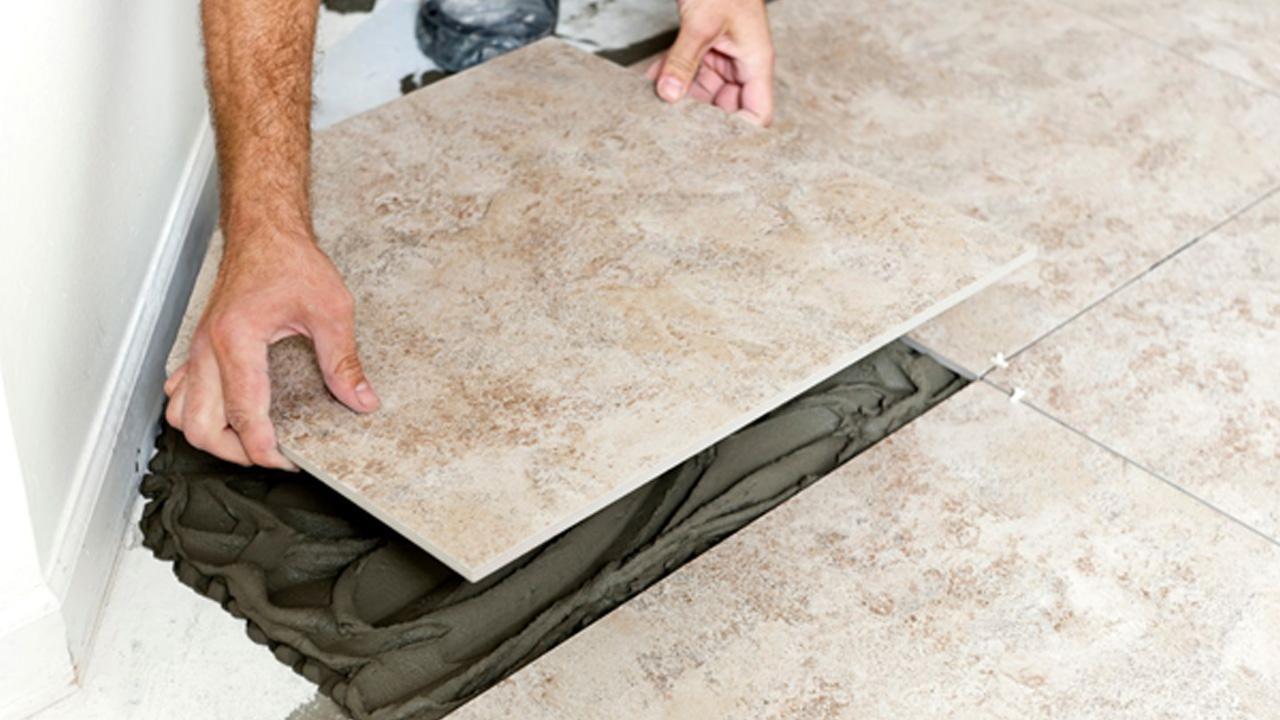Tile Grout Epoxy

Tile Grout Epoxy
ADVERTISEMENT
Introduction
When it comes to transforming the look of your home or adding a touch of elegance, few things compare to a beautifully tiled floor or wall. Whether you're a seasoned DIY enthusiast or a first-time tile installer, having the right tools, knowledge, and techniques is crucial for a successful project.
In this comprehensive article, we will guide you through the steps of tile installation and share valuable tips and tricks to ensure your project goes smoothly. We will also emphasize the importance of using quality tile adhesives and tile grout epoxy for a long-lasting and professional finish that will truly enhance your living environment.
Steps, Tips, and Tricks for a Flawless Tile Installation
Creating a Solid Foundation
Before you begin laying tiles, it's essential to create a solid and even foundation. This involves preparing the surface by removing any existing flooring, repairing cracks or unevenness, and ensuring a clean and dust-free base. Once the surface is ready, it's time to mix the tile adhesive or mortar according to the manufacturer's instructions. Proper mixing is crucial, as it determines the adhesive's consistency and strength. Use a trowel to spread the adhesive evenly on the floor or wall, working in small sections to prevent it from drying out before laying the tiles.
Crafting Seamless Transitions
When it comes to tiling, achieving seamless transitions and precise cuts is essential for a professional-looking result. Before cutting tiles, take accurate measurements of the space, allowing for proper spacing and accounting for any irregularities or corners. There are various tools you can use for cutting tiles, such as a tile cutter, wet saw, or tile nipper, depending on the type of tile and the desired cut. Mark the tiles carefully and make precise cuts, ensuring a perfect fit along the edges and corners. Take your time and double-check your measurements to avoid costly mistakes.
Setting Tiles Free for Their Full Glory
Once the tiles are cut and ready, it's time to lay them in place. Start by applying a thin layer of adhesive to the back of each tile, using a notched trowel to create ridges. Press each tile firmly into place, using a slight twisting motion to ensure proper adhesion.
Place tile spacers between the tiles to maintain consistent spacing and alignment. This step is crucial to achieving uniform grout lines and a polished finish. Continue laying the tiles, working in small sections, and periodically checking for levelness and alignment. If necessary, use a rubber mallet and a level to adjust the tiles.
The Magical Finishing Touch with Tile Grout Epoxy
Grouting is the final step in tile installation and plays a significant role in both the aesthetics and durability of the project. After allowing the adhesive to dry according to the manufacturer's instructions, it's time to mix the grout. Choose a grout color that complements your tiles and desired style. One option to consider is tile grout epoxy, which offers excellent durability and resistance to stains and moisture. Mix the grout according to the manufacturer's instructions, ensuring a smooth and consistent consistency. Using a grout float, spread the grout diagonally across the tiles, pressing it firmly into the gaps. Remove any excess grout from the tile surfaces using the float's edge.
Allow the grout to set for a short period, usually around 15-20 minutes, and then use a damp sponge to gently wipe away any haze or residue. Rinse the sponge frequently and avoid excessive water, as it can weaken the grout. Once the grout has dried completely, typically after 24-48 hours, use a grout sealer to protect it from stains and moisture. If you've used tile grout epoxy, you may not need to apply a separate sealer, as epoxy grout is already highly resistant to stains and water damage.
Preserving its Beauty for Years to Come
After completing the tile installation, proper maintenance is essential to preserve its beauty and longevity. Regular cleaning is crucial to getting rid of dirt, grime, and stains. Use a mild cleaner specifically formulated for tiles, and avoid abrasive materials that can scratch the surface. Be mindful of the recommended cleaning instructions for the specific tile type and grout used in your project. Additionally, inspect the grout periodically and reapply sealer as needed to maintain its integrity and prevent water penetration.
Essential Tips and Tricks for Tile Installation Mastery
Accurate Measurements for Tile Installation
Accurate measurements are the foundation of a successful tile installation. Take the time to measure the space you'll be tiling, including any angles, corners, or irregularities. Double-check your measurements before making any cuts or laying tiles to avoid costly mistakes. Remember the old saying: ‘measure twice, cut once’.
The Secret Ingredient for Strong Bonds
When mixing tile adhesives, it's crucial to follow the manufacturer's instructions regarding the mixing ratio and consistency. Using the wrong ratio can result in weak adhesion, leading to tile failure over time. Take care to mix the adhesive properly and allow it to cure for the recommended time before grouting.
Ensuring the Right Quantity for Seamless Success
When ordering tiles for your project, it's advisable to purchase some extra tiles to account for potential breakages, mistakes, or future repairs. This way, you'll have replacements readily available if needed. Additionally, ensure that you inspect the tiles upon delivery to identify any defects or discrepancies.

Elevating Your Tiling Game
To achieve a level and even surface, consider using a tile leveling system. This innovative system helps to eliminate lippage, which occurs when tiles are not aligned properly, resulting in uneven surfaces. It consists of leveling clips and wedges that ensure each tile is flush with its neighboring tile, resulting in a professional-looking installation.
Choosing the Right Trowel
The type and size of the trowel you use for spreading adhesive can greatly impact the installation. Different trowel sizes are suitable for different tile sizes and materials. Refer to the tile manufacturer's recommendations or seek advice from a professional to choose the right trowel for your project. Using the proper trowel ensures proper adhesive coverage and helps avoid issues such as hollow spots or tile lifting.
Let Tile Grout Epoxy Dry Before Scrubbing
Tile grout epoxy is a durable and stain-resistant option for grouting. However, it requires proper drying time before scrubbing or cleaning. Follow the manufacturer's instructions regarding the drying time, and avoid any heavy foot traffic or excessive moisture during this period.
Ensuring Your Tile Adhesive Dry Before Grouting
Before applying grout, ensure that the tile adhesive is completely dry. Failure to do so can result in adhesion issues and a weaker bond between the tiles and the substrate. Check the manufacturer's guidelines for the recommended drying time before proceeding with grouting.
Choosing the Right Machine
For larger tile installations or challenging surfaces, using the right machine can make the job easier and more efficient. Consider renting or purchasing tools such as tile cutters, wet saws, or tile polishers, depending on your specific needs. These machines can save you time and effort while achieving professional results. However, ensure you have the necessary skills and safety precautions when operating power tools.
Install It Under Rigid Underlayment
To ensure the stability and longevity of your tile installation, it's important to have a solid and rigid underlayment. This provides a strong base for the tiles and helps prevent cracks or movement over time. Consult with professionals or refer to industry guidelines to select the appropriate underlayment for your project. Depending on the surface, you may need to use products like cement boards, uncoupling membranes, or self-leveling compounds to create a suitable underlayment.
Your Journey to Tile Installation Excellence
Proper tile installation requires attention to detail, careful planning, and the right tools. By following the steps, tips, and tricks outlined in this comprehensive guide, you can achieve a professional-looking tile installation that enhances the beauty and functionality of your space.
Remember to use high-quality tile adhesives, grouts, and other materials, mixed and applied correctly, to ensure a long-lasting and durable finish. With patience, practice, and a commitment to excellence, your tile installation skills will continue to improve over time. Enjoy the process of transforming your space and relish in the beauty and durability that well-installed tiles bring to your home.
 Subscribe today by clicking the link and stay updated with the latest news!" Click here!
Subscribe today by clicking the link and stay updated with the latest news!" Click here!







